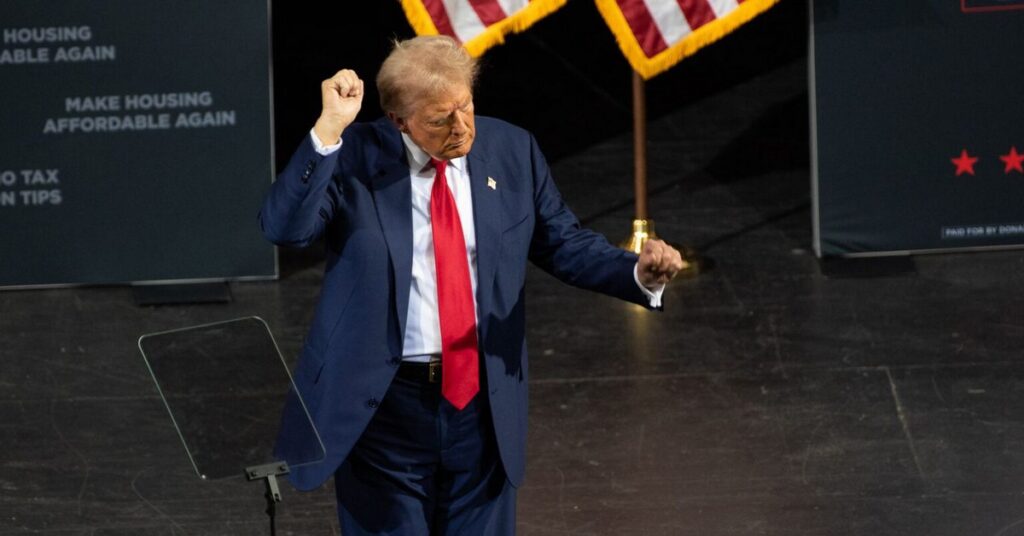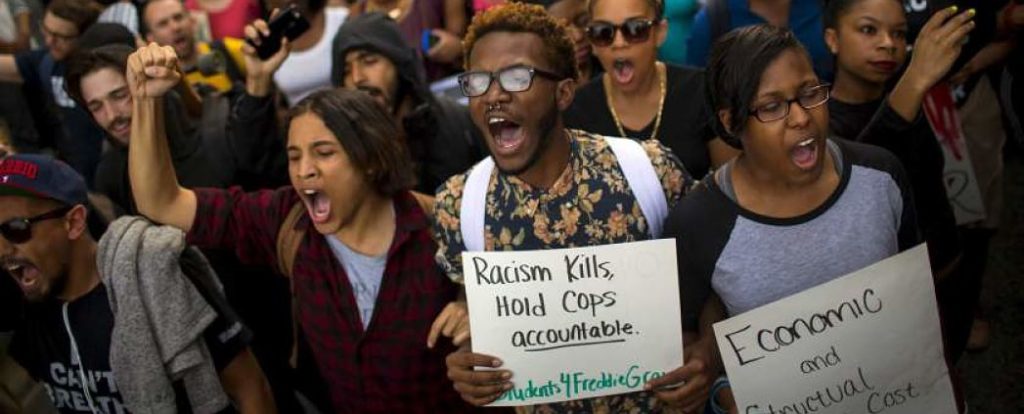
Wayne Broadway is a writer from Sacramento, CA. He writes…
Another day, another norm violation. This past week, President Trump took command of the D.C. Metropolitan Police and ordered the National Guard into the city under the edict that it root out the “gangs and bloodthirsty criminals, roving mobs of wild youth, drugged-out maniacs and homeless people.” Based on his apocalyptic depiction of the city, you’d be forgiven for feeling like perhaps this is for the best.
After all, what he is doing is technically legal. The 1973 Home Rule Act allows presidents to take during an emergency, the Trump administration, the first one to ever actually utilize this provision, is claiming the current situation in the nation’s capital is just that. However, there are pesky facts that get in the way of such claims. As the current administration continues its worrying trend of accelerating its authoritarian actions and rhetoric, it is worth considering five key issues with Trump’s recent deployment of the National Guard in DC.

5. It Defies Facts
While the President has made no secret of his appreciation for blatant lies that his supporters frame as mere exaggeration, the facts cannot support his claims that Washington is a city in an existential war with itself. While it is true that DC has a higher homicide rate than other major cities like New York and Los Angeles, its 2024 rate doesn’t even crack the top ten ranking of US cities.
Adding to this, the 2025 murder rate is trending even lower, with an 11% drop in homicides compared to this time last year. This is likely part of an overall drop in the national homicide rate that had spikes in 2020 and 2022 but is beginning to trend lower than even pre-pandemic rates. Another factor might be the preventative and restorative work that is happening in cities with high crime rates (more on that below). Whatever the case, it simply distorts reality to deny that DC, whatever issues it may have with crime, is not at a 30-year low in violent crime.
And for folks like myself that have watched series like “The Wire” or “We Own This City” and are understandably wary of the bureaucratic chicanery that leads to “juking” or altering stats in order to make felonies into misdemeanors and thereby appear to reduce violent crime without actually doing so, simply look to the homicide rates. It’s easy for a police command structure to whitewash an assault; it’s much harder to hide an entire body.

4. It Contributes to False Notions of What Actually Decreases Crime
More policing forces alone do not stop crime. Full stop. Think back on any time America has occupied a nation. What happened the very moment we left? A quote attributed to a Taliban leader comes to mind: “You have the watches, but we have the time.” In other words, no occupying force will ever have the buy-in necessary to outlast the will of the occupied. Put into an American context, this means that “boots on the ground” in our cities will only do so much to prevent the tragic outcomes of the online back-and-forths that precipitate much of modern youth gun violence.
Sure, a police presence may stop that violence today or tomorrow, but what about months or years from now? The ego-bruising hurts that cause many senseless homicides will still be there long after the camera crews and confused Guardsmen have left, and there needs to be something to address it. Preventative programs and restorative justice are a key part of the answer. To quote one study, “successful crime prevention should be based on social programs and physical improvements to the built environment that are unique to the city.” It cannot all be based on simply occupying impoverished neighborhoods until crime magically dissipates.
Crime has a provenance, and unless you address those root causes—poverty, lack of access to education, a dearth of positive role models—you risk feeling like overpolicing is the only option. And then you produce countless ugly scenes in which residents rightly feel like their very existence is being criminalized.

3. It Militarizes Civilian Spaces
This part should be clear, so we’ll keep it short. THE MILITARY DOES NOT POLICE CIVILIANS. That’s literally what dictators do. The armed forces are meant to protect its citizens against other armies, not harass them about civil infractions. Even crimes as odious as murder are not within the military’s purview to investigate when it comes to civilians. That’s kind of the whole point of America’s founding emphasis on federal versus local power. Without that balance, we risk falling (deeper) into authoritarianism. Now, the Guard occupies an interesting role in that, unlike the Army or the Marines, it can be activated under Title 32 to do police work. However, that is usually done in times of complete civil unrest like widespread riots or Black teens trying to go to school in Arkansas. It is not meant to supplement the everyday workings of even the most overtaxed civilian police department. To do so risks making the analogy that police are like occupying forces into a bleak reality.

2. It Evokes Harmful Racialized Narratives
Among Trump’s list of “bad, very bad” cities, you will find Chicago, Los Angeles, New York, and “of course, Baltimore and Oakland.” It’s not much of a riddle to ask what these cities have in common. Besides being Democratic strongholds, they are also “minority majority” cities that are part of a growing trend of nonwhite population growth outpacing that of whites. This has led to a frenzied, sometimes violent backlash from white supremacists and the rise of “Great Replacement” conspiracy theories that blame everything except the fact that many people simply don’t want kids.
Trump has seized this opportunity to claim what the future will look like if the “minorities” become the national majority. In short, it’ll be bedlam so dire an armed resistance is needed. By singling out these cities—many of which have Black mayors—Trump paints an image of the inevitable failure of Black leadership and the inherent violence of POC communities. He is essentially parroting white nationalist talking points and using federal might to support his claims.
1. It Continues the Administration’s Federal Overreach into Various Institutions
Pity the poor people that thought Trump was a small-government conservative. Right now, they are likely shocked that the party of little-to-no government intervention currently has its hands in every institutional cookie jar. He’s attacking books, universities, museums, and key financial institutions that he feels don’t adhere to his vision of America. He is violating various norms in order to secure a version of America that seemingly has no people of color, no LGBTQ+ community, and has always been right in any decision it’s ever made. He’s using executive force to assimilate or annihilate institutions he sees as going against his will.
There’s an “f-word” for that, but it eludes me at the moment. Society cannot function unless there is a balance between various social institutions — churches, schools, families, governments, etc. They all have a role to play in a free and fair society. When one institution decides it’s the be-all and end-all, there’s a problem. This trend of federal overreach must end before a smarter, more clever politician perfects it.
Wayne Broadway is a writer from Sacramento, CA. He writes fiction, non-fiction, and is currently obsessed with Pomeranians.









